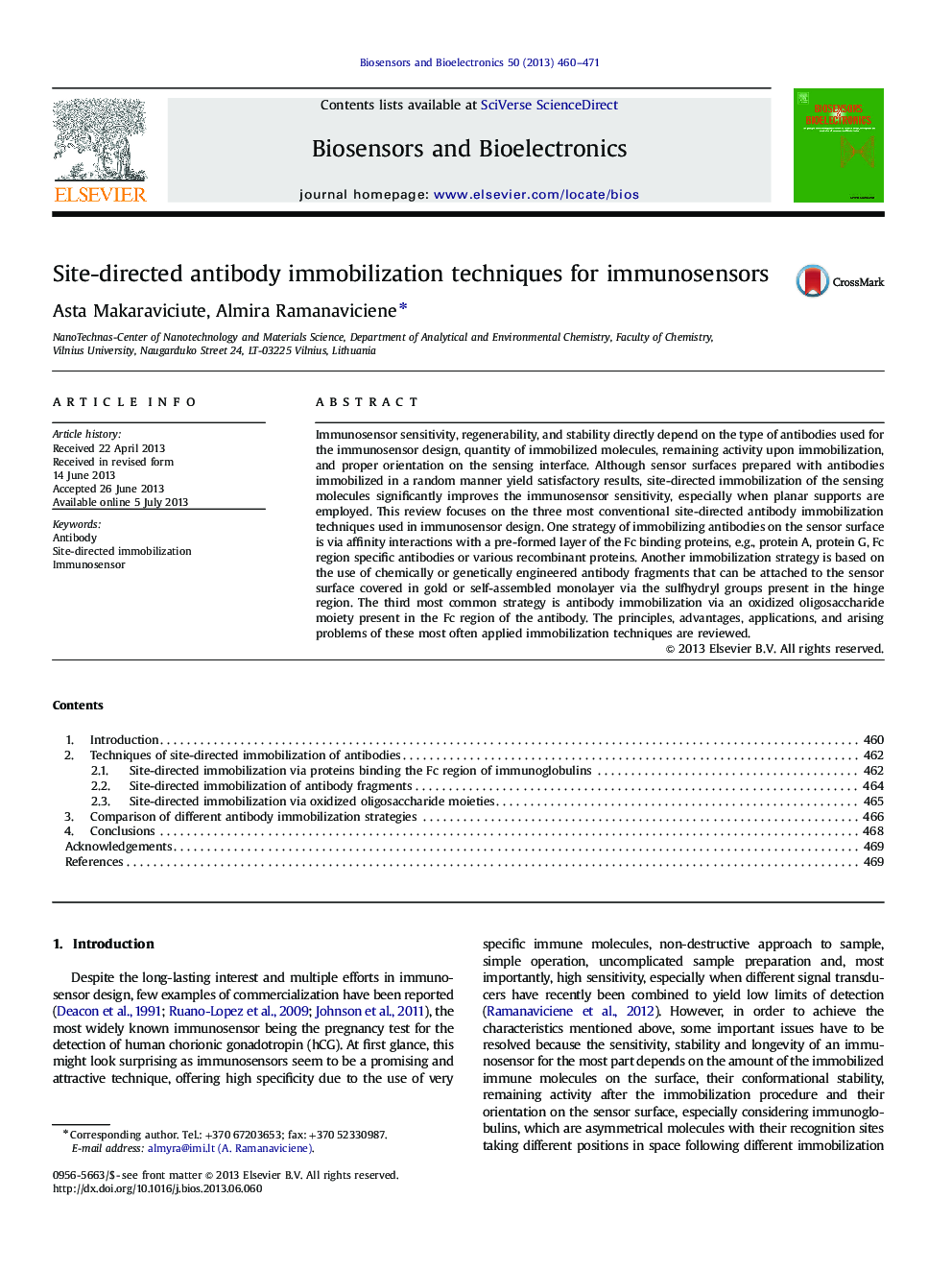| کد مقاله | کد نشریه | سال انتشار | مقاله انگلیسی | نسخه تمام متن |
|---|---|---|---|---|
| 7233696 | 1470981 | 2013 | 12 صفحه PDF | دانلود رایگان |
عنوان انگلیسی مقاله ISI
Site-directed antibody immobilization techniques for immunosensors
ترجمه فارسی عنوان
تکنیک های ایمن سازی آنتی بادی های سایت جهت کنترل ایمنی
دانلود مقاله + سفارش ترجمه
دانلود مقاله ISI انگلیسی
رایگان برای ایرانیان
کلمات کلیدی
پادتن، محاصره ی سایت ایمونوسنسور،
موضوعات مرتبط
مهندسی و علوم پایه
شیمی
شیمی آنالیزی یا شیمی تجزیه
چکیده انگلیسی
Immunosensor sensitivity, regenerability, and stability directly depend on the type of antibodies used for the immunosensor design, quantity of immobilized molecules, remaining activity upon immobilization, and proper orientation on the sensing interface. Although sensor surfaces prepared with antibodies immobilized in a random manner yield satisfactory results, site-directed immobilization of the sensing molecules significantly improves the immunosensor sensitivity, especially when planar supports are employed. This review focuses on the three most conventional site-directed antibody immobilization techniques used in immunosensor design. One strategy of immobilizing antibodies on the sensor surface is via affinity interactions with a pre-formed layer of the Fc binding proteins, e.g., protein A, protein G, Fc region specific antibodies or various recombinant proteins. Another immobilization strategy is based on the use of chemically or genetically engineered antibody fragments that can be attached to the sensor surface covered in gold or self-assembled monolayer via the sulfhydryl groups present in the hinge region. The third most common strategy is antibody immobilization via an oxidized oligosaccharide moiety present in the Fc region of the antibody. The principles, advantages, applications, and arising problems of these most often applied immobilization techniques are reviewed.
ناشر
Database: Elsevier - ScienceDirect (ساینس دایرکت)
Journal: Biosensors and Bioelectronics - Volume 50, 15 December 2013, Pages 460-471
Journal: Biosensors and Bioelectronics - Volume 50, 15 December 2013, Pages 460-471
نویسندگان
Asta Makaraviciute, Almira Ramanaviciene,
